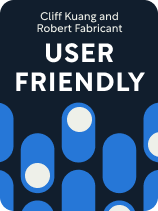

This article is an excerpt from the Shortform book guide to "User Friendly" by Cliff Kuang and Robert Fabricant. Shortform has the world's best summaries and analyses of books you should be reading.
Like this article? Sign up for a free trial here.
How should technology make life easier? What do you need to do to understand users’ needs?
When you’re creating any type of product dealing with technology, the first thing you need to consider is how it’ll make life easier for the user. In User Friendly, Cliff Kuang and Robert Fabricant explain in detail how this is made possible using user-friendly design.
Continue reading to learn more about how you should create a product centered around a user’s needs.
Addresses User Needs
A key quality of a user-friendly device is something that fundamentally makes the user’s life easier. Kuang and Fabricant contend that it’s not enough for a product to simply look nice—it must also be something that people are motivated to use, which is why it’s important you make an effort to understand users’ needs and desires.
(Shortform note: Most definitions of “user-friendly” include two key components: how easy it is to use (also known as discoverability when it’s something completely new) and how easy it is to understand. By emphasizing the importance of meeting users’ needs, Kuang and Fabricant bring in a third component often described in industrial design as value, or the product’s usefulness to the user. Perceived value could also come from the emotional benefits of using a product and not just its tangible benefits.)
Kuang and Fabricant write that product designers have to be tuned into the needs and desires of others without being limited by their own experience of the world. Therefore, it’s important that good user experience designers observe behavioral patterns and empathize with users’ experience to come up with ideas. For example, if you were trying to come up with a new idea for a kitchen gadget, you might observe many different kinds of people cooking and notice at what points people tend to get frustrated or what tasks are particularly tedious. Then, by empathizing with users, you can gain insight into how to make the user experience better.
(Shortform note: In The Design of Everyday Things, Don Norman, a pioneer in the user experience industry, clarifies that this kind of observational design research is distinct from the concept of market research. He writes that while design research aims to identify customer needs, market research tries to identify the qualities that will make customers buy a product. In addition, market research tends to focus on what the “average” consumer likes, surveying many people for a short period of time rather than a few people for longer periods of time. He refers to the more in-depth observation strategy as “applied ethnography.”)
Kuang and Fabricant claim that inconveniences that users experience—what the authors call “frictions”—are opportunities to make tangible improvements in people’s lives. For instance, the immersion blender (a handheld device that purées food in a pot or bowl) is appealing to consumers because it eliminates the need to wait for a hot soup to cool down, transfer it to a blender, blend it, then transfer it to another container again. It reduces the number of steps to complete a task, and it’s also easier to clean than a traditional blender.
(Shortform note: Although functionality and ease of use are key to ensuring that a product has good value, many product designers also emphasize the importance of good aesthetics—the visual appeal of a product—for it to be a commercial success. In The Design of Everyday Things, Norman writes that aesthetics are particularly important for businesses now that people can choose from many online retailers with products that seem functionally identical. For example, faced with many options for a printer, a consumer might base their choice on aesthetic characteristics like the color, logo, or the product’s webpage.)
Kuang and Fabricant write that focusing on physical or cognitive disabilities can also be a good source of inspiration for user-friendly innovations that will be widely appreciated.
(Shortform note: Designing products with disabilities in mind doesn’t have to be limited to diagnosed medical conditions—the concept of inclusive design can be more broadly applied to any physical or mental limitations, which are universal. For example, designers could create products that cater to people who struggle with poor short-term memory or struggle to use existing products because of their height or weight.)
An example of this is the origin story for the thick, rubbery handles on vegetable peelers designed by the company OXO. The company’s founder, Sam Farber, claims that the design was inspired by his wife, whose arthritis prevented her from using traditional, narrow, metal-handled peelers. By designing a peeler that was more user-friendly for people with arthritis (because it’s broader and made of a material that’s easier to grip), the company created a product that was more comfortable for everyone to use.
| The Legacy of the OXO Peeler OXO’s handle design has been a huge commercial success since it was developed in 1990. The peeler is considered such a revolutionary design that it was inducted into the Museum of Modern Art collection in 1994. OXO eventually incorporated it into a “Good Grips” product line, which includes kitchen utensils such as pizza cutters, can openers, and ice cream scoopers. The story of the OXO peeler has become a legend in the design industry not only because of its human-centered origin but also because of the creative thinking that was applied throughout its development. For example, in the process of designing a more comfortable product for disabled users, the designers also drew inspiration from another familiar design: rubber bicycle handle grips with thin ribbing. The OXO peeler designers incorporated this style of ribbing into strategic areas of the peeler so people can press their fingers into the material and get a strong yet comfortable grip on it. |

———End of Preview———
Like what you just read? Read the rest of the world's best book summary and analysis of Cliff Kuang and Robert Fabricant's "User Friendly" at Shortform.
Here's what you'll find in our full User Friendly summary:
- A look at the evolution of user-friendly design, from the 1920s to today
- How excessive user-friendliness is causing a technology addiction
- How user-friendliness can be used to reflect the values of customers instead






